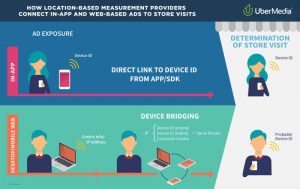August 19, 2024
How did Walmart’s drone delivery service grow so big, so fast?
Walmart now has the largest drone delivery footprint of any U.S. retailer. But the retail giant’s journey there required help from others.
It has become increasingly common to see a drone hovering over a building with a delivery order. Customers want things faster these days, and drone delivery offers retailers a great way to meet that demand.
At the forefront of the drone delivery revolution is Walmart, which has leapfrogged over Amazon when it comes to last-mile logistics (that is, the last step in the delivery process when a parcel moves from a transportation hub to its final destination). In January of 2024, Walmart announced it now has the largest drone delivery footprint of any U.S. retailer. But the retail giant isn’t solely responsible for its success: A series of strategic partnerships with major drones-as-a-service (DaaS) companies like DroneUp, Zipline, and Flytrex, have proven crucial to Walmart’s ability to scale.
But how exactly are these DaaS companies helping Walmart to meet the flurry of customer demands? Leaders at some of Walmart’s major partners for drone delivery drill deep into how they make this possible.
BEHIND THE SCENES
The drone delivery market, which encompasses a wide range of drone-based services for businesses, government agencies, and individuals, is poised for explosive growth. A report by Mordor Intelligence predicts the market will surge from $690 million in 2024 to $1.75 billion in 2029, buoyed by services like aerial photography and videography, data collection and analysis, infrastructure inspection, and search and rescue operations.
For John Vernon, cofounder and CTO at DroneUp—one of Walmart’s major partners for drone delivery—the pandemic marked a turning point for drone delivery services. “Walmart used drones to deliver COVID-19 test kits to customers, demonstrating the viability and benefits of drone delivery in emergencies,” he says. “This also accelerated the adoption of drone technology, highlighting its potential to provide contactless and rapid delivery solutions.”
Behind the scenes of Walmart’s drone delivery service, however, are companies like Elsight, which DroneUp has been leaning on since 2022 to make sure its unmanned systems stay connected. “Reliable communication is essential for mission completion,” says Vernon. “We can’t have drones dropping out of the sky because they lose signal. “Unlike a dropped video call, a lost connection during a drone flight could have serious consequences.”
This is where Elsight and its 5G and satellite communications capabilities come into play.
RESILIENT CONNECTIVITY
5G connectivity ensures that drones can communicate with control centers, navigate accurately, and avoid obstacles. This high-speed, low-latency network is essential for the real-time data transmission needed for safe and efficient drone operations.
“The ability to rely on a single infrastructure for communication just isn’t enough for mission-critical applications like drones,” notes Yoav Amitai, CEO at Elsight. Imagine a scenario, he says, where a drone loses cellular signal during a delivery: “This could lead to a failed mission and an unhappy customer.”
Elsight’s system essentially aggregates signals from various sources, including cellular networks, satellite communications, and even Wi-Fi. This creates a robust connection, ensuring drones can maintain communication even if one network fails. Because what matters most in drone delivery isn’t the speed of 5G connectivity, but the resilience of the connection. Thanks to Elsight’s robust connectivity infrastructure, DroneUp can execute beyond-visual line-of-sight (BVLOS) missions (so named because the drones fly beyond the pilot’s visual line of sight), keep deliveries on track, and meet safety regulations—all without the need for numerous human observers. With Elsight, one drone operator can control many drones from any location.
REGULATORY AND SECURITY HURDLES
Many drones feature inbuilt or attached cameras, and those devices can pose certain privacy and security risks. One such risk is surveillance and data collection, according to Lightcore CEO Fernando Correa.
“Drones equipped with cameras and sensors have the potential to collect vast amounts of data, including images and video footage of private properties and individuals, raising concerns about surveillance and the potential for misuse of collected data,” he says.
Unauthorized access to the data that drones collect can also lead to privacy breaches, exposing sensitive information about customers. Drones rely on wireless communication for navigation and data transmission. Correa notes that this reliance makes them vulnerable to hacking, which could give malicious actors unauthorized access to customer information or control of the drone itself. Drones, especially those delivering high-value items, could also become targets for theft.

Regulations provide another major hurdle, says Flytrex CEO Yariv Bash. “You must certify your system to fly safely above people on a federal level or across the U.S. and that doesn’t come easy,” he says. The U.S. Federal Aviation Administration (FAA) says Part 135 certification for drone package delivery is “the only path for small drones to carry the property of another for compensation beyond visual line of sight.” But getting Part 135 certification, which involves five rigorous phases, is no walk in the park. The FAA, however, continues to encourage innovation, as it looks to ease BVLOS operations over the next few years. As Kay Wackwitz, CEO at Drone Industry Insights, notes, the FAA is one of the last civil aviation authorities working on a rule for operating drones beyond visual line of sight,’ which is planned for early 2026.
Another challenge is the business case itself, notes Wackwitz. Operating drones safely is quite expensive, and companies must thus operate with a lean personnel. For a company as big as Walmart, though, the challenge will be scaling nationwide while addressing public concerns and resentments. “It will be crucial to maintain high safety levels while reducing impacts on people and nature,” says Wackwitz. “By navigating these challenges thoughtfully, Walmart can further position itself for more success in the drone delivery space.”
A SKY FULL OF POSSIBILITIES
While there are often regulatory hurdles to jump, with the FAA’s stringent rules and regulatory limitations on BVLOS operations, Elsight’s Amitai remains optimistic that collaboration between regulators, DaaS companies, and retailers will continue to push the industry forward.
“Imagine a world where underutilized airspace becomes a new delivery highway, similar to how cars utilize roads today. Drones will safely and efficiently deliver goods, transforming the way we shop and receive packages,” he says.

ABOUT THE AUTHOR
(3)
Report Post






